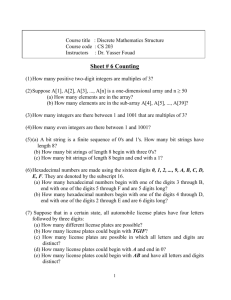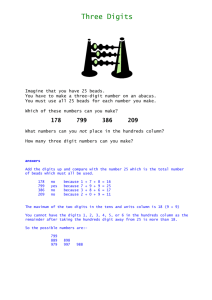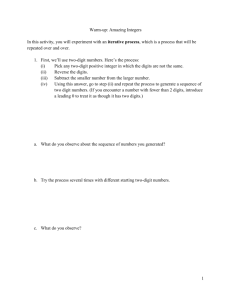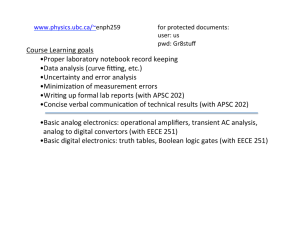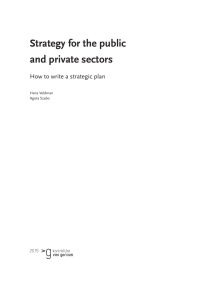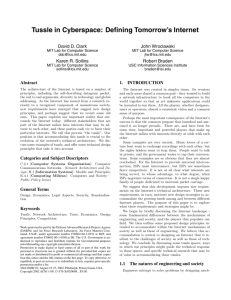MATH 1700 W12 Quiz 3 Solutions 1 1. a) How many positive three
advertisement
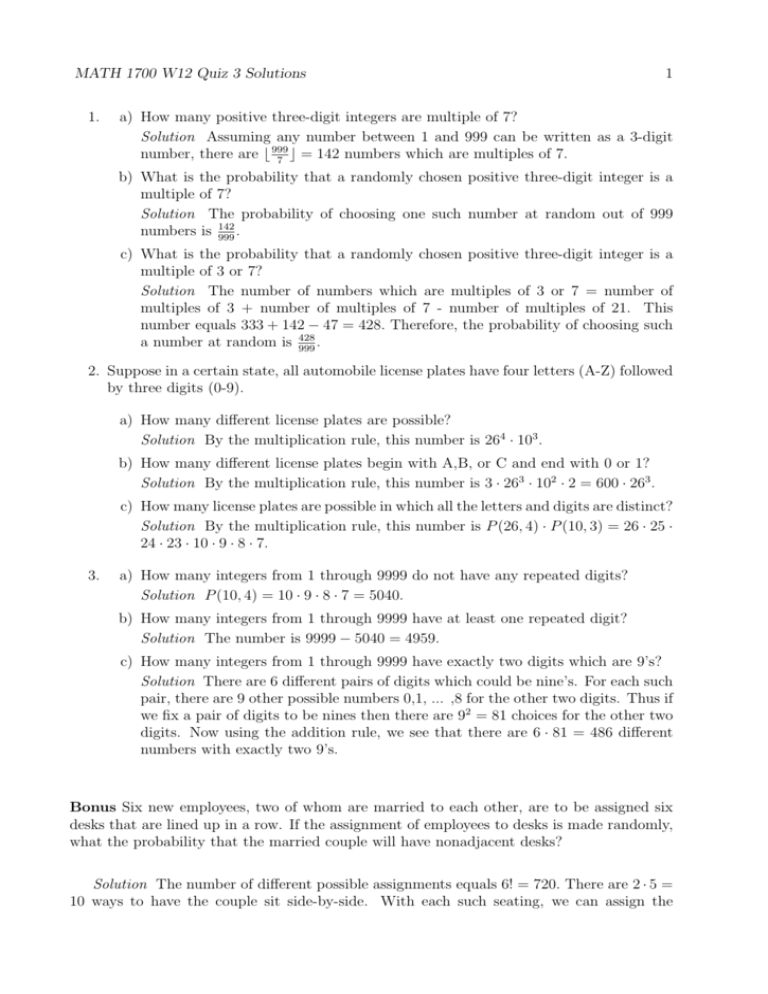
MATH 1700 W12 Quiz 3 Solutions 1. 1 a) How many positive three-digit integers are multiple of 7? Solution Assuming any number between 1 and 999 can be written as a 3-digit number, there are ⌊ 999 ⌋ = 142 numbers which are multiples of 7. 7 b) What is the probability that a randomly chosen positive three-digit integer is a multiple of 7? Solution The probability of choosing one such number at random out of 999 numbers is 142 . 999 c) What is the probability that a randomly chosen positive three-digit integer is a multiple of 3 or 7? Solution The number of numbers which are multiples of 3 or 7 = number of multiples of 3 + number of multiples of 7 - number of multiples of 21. This number equals 333 + 142 − 47 = 428. Therefore, the probability of choosing such a number at random is 428 . 999 2. Suppose in a certain state, all automobile license plates have four letters (A-Z) followed by three digits (0-9). a) How many different license plates are possible? Solution By the multiplication rule, this number is 264 · 103 . b) How many different license plates begin with A,B, or C and end with 0 or 1? Solution By the multiplication rule, this number is 3 · 263 · 102 · 2 = 600 · 263 . c) How many license plates are possible in which all the letters and digits are distinct? Solution By the multiplication rule, this number is P (26, 4) · P (10, 3) = 26 · 25 · 24 · 23 · 10 · 9 · 8 · 7. 3. a) How many integers from 1 through 9999 do not have any repeated digits? Solution P (10, 4) = 10 · 9 · 8 · 7 = 5040. b) How many integers from 1 through 9999 have at least one repeated digit? Solution The number is 9999 − 5040 = 4959. c) How many integers from 1 through 9999 have exactly two digits which are 9’s? Solution There are 6 different pairs of digits which could be nine’s. For each such pair, there are 9 other possible numbers 0,1, ... ,8 for the other two digits. Thus if we fix a pair of digits to be nines then there are 92 = 81 choices for the other two digits. Now using the addition rule, we see that there are 6 · 81 = 486 different numbers with exactly two 9’s. Bonus Six new employees, two of whom are married to each other, are to be assigned six desks that are lined up in a row. If the assignment of employees to desks is made randomly, what the probability that the married couple will have nonadjacent desks? Solution The number of different possible assignments equals 6! = 720. There are 2 · 5 = 10 ways to have the couple sit side-by-side. With each such seating, we can assign the MATH 1700 W12 Quiz 3 Solutions 2 remaining 4 seats (to the four other people) in 4! = 24 ways. Thus by the addition rule, there are 10·24 = 240 different seating assignments where couple sit together. Consequently, there are 720 − 240 = 480 seating assignment where they do not sit together. So the probability that they sit together in a randomly chosen seating assignment is 480 = 23 . 720



